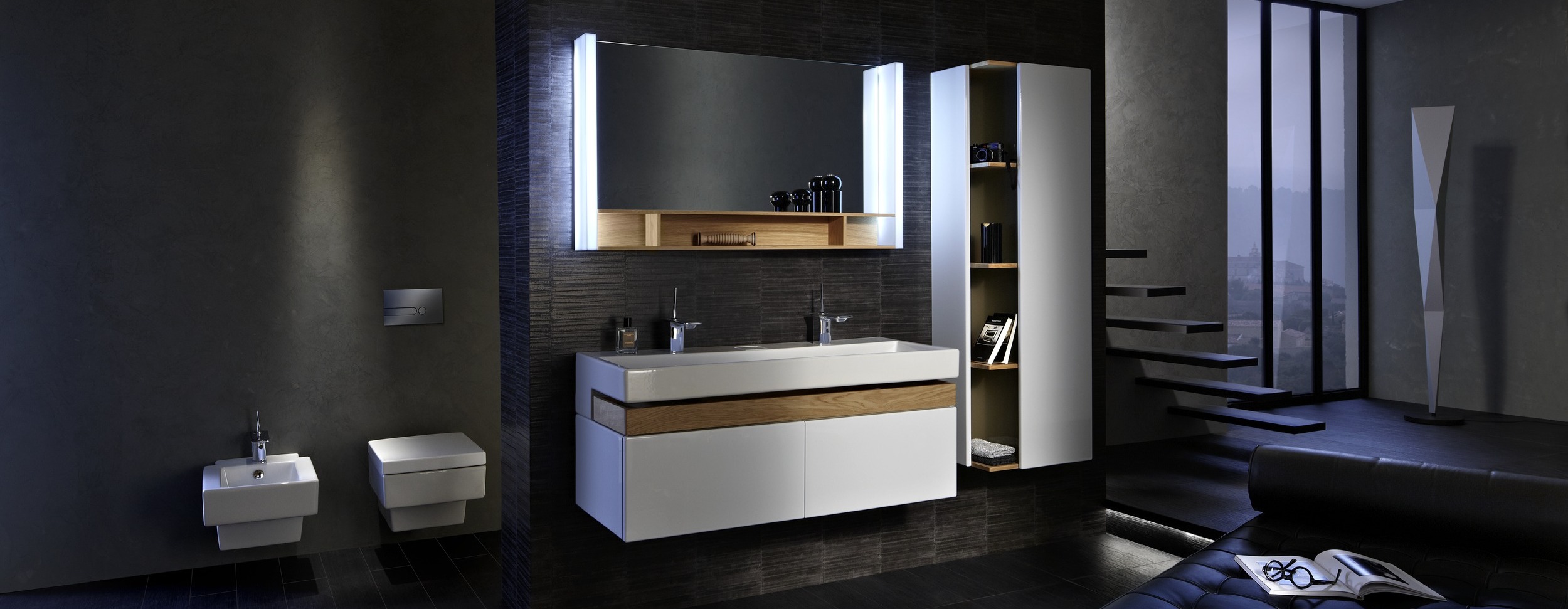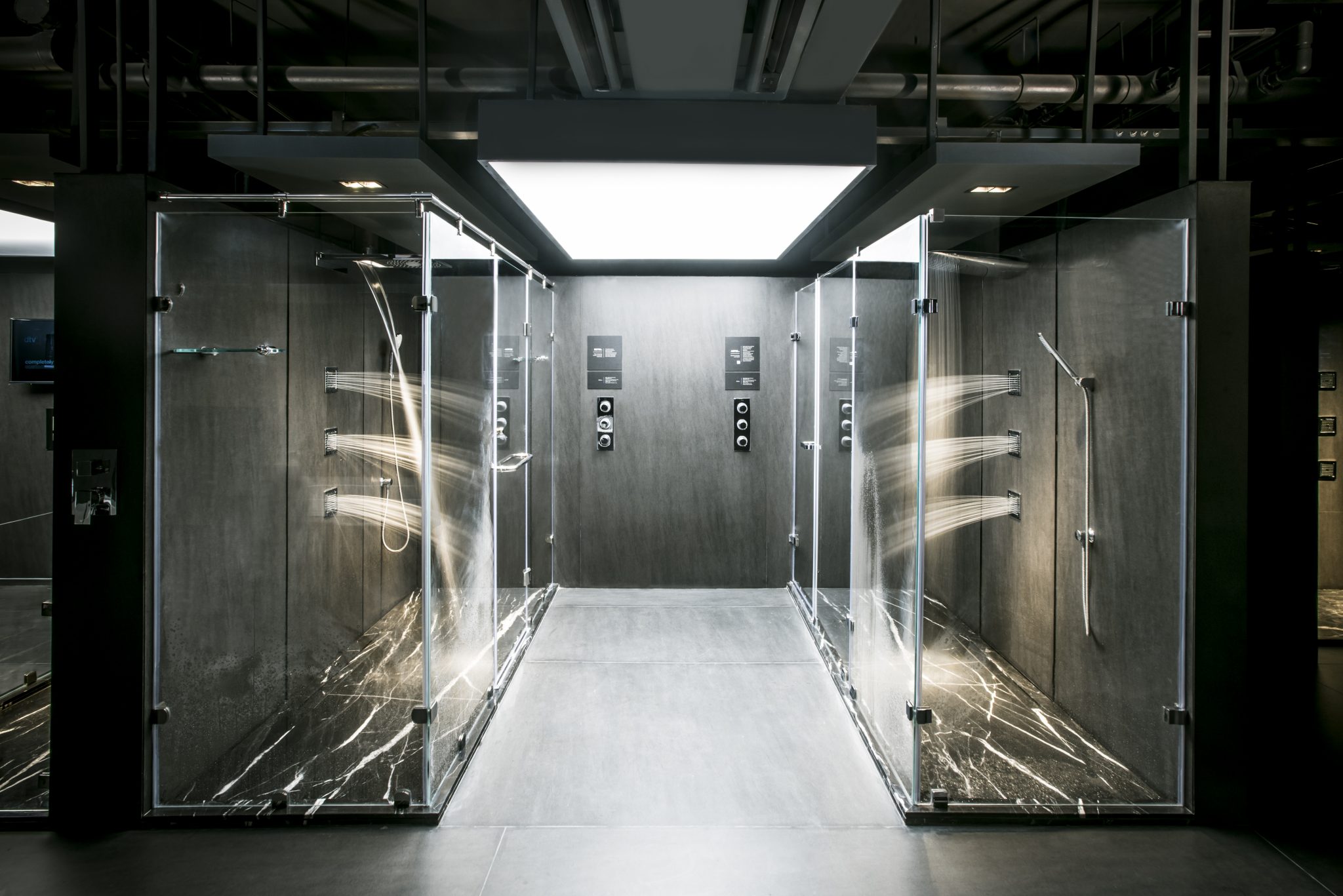Behind my New Design Challenge
photos by Agustin Díaz
Recientemente he estado bastante interesado en el tema del diseño de interiores. No se si sean todas las Architectural Digest que me he leído o tal vez el renacimiento de Queer Eye el que me ha puesto a ver los espacios de una nueva manera.
En la inquietud tomé la abrupta decisión de arriesgarme a hacer algunos cambios en mi cuarto, pequeños pero significativos, por lo menos para mi. Algún papel tapiz, gabinetes nuevos, algo que hiciese que la rutina de llegar a mi habitación después del trabajo fuese un poco diferente.
Una vez ya con las ganas y el ánimo la cosa ahora era buscar dónde iba a encontrar las herramientas para re-decorar mi cuarto, y como en Panamá hay TANTAS opciones la tarea iba a ser un poco complicada. Una amiga me recomendó que fuera a ver lo que había en Kohler y voilá, encontré los papeles tapices que iban justo con mi personalidad. Pero como soy un freak, antes de iniciar el proceso me puse a buscar en Internet un poco de la historia de la empresa y descubrí tantas cosas interesantes que me pareció compartirla con ustedes los/as que me leen ;)
For a few weeks Architectural Digest has been in my cupboard a lot, that combined with the Queer Eye revival (and the amazing job Bobby’s been making to people’s houses) has led me to an obscure obsession with interior design, and I mean obscure in the sense of I actually don’t know anything ‘bout it but I’m gonna try.
Amidst the obsession, I took a gamble and decided to make ch-ch-changes to my room. A wallpaper maybe, or perhaps a doorknob, something that would make my daily routine of going in and out of my room different.
Once I had made that decision the conundrum of “where do I find high-quality things” began – and since Panama has a reputation for excellent design stores. A friend recommended Kohler but at first I thought they only ran plumbing, but I was v wrong. Since I’m a freak I said to myself I couldn’t start any design process without reading some history of the company, typical me. Between reading, I found so many interesting things I came up with this article so I could share it all with y’all my readers. Whaddaya say if we jump on board of this time machine?
Kohler's first manufacturing facility in Wisconsin.
En 1854, a sus diez años John Michael Kohler emigró a América con su familia desde Austria. Ubicados en Milwaukee, John comenzó a trabajar como vendedor y en una de sus andanzas conoció a la hija de un industrializador de hierro, con la que se casó y cuya familia poseía una fábrica industrial. No fue mucho lo que transcurrió para que John viera la oportunidad de comprar acciones en lo que en ese entonces se llamaba la Union de Hierro y Acero de Wisconsin. Tenía 19 años cuando finalmente fundó Kohler Co.
Los Estados Unidos estaba en medio de una crisis financiera que dejó a casi 68 compañías ferroviarias en bancarrota, pero a pesar de las adversidades John persistió. Comenzó a producir implementos de hierro para agricultores, piezas fundidas para pequeñas fabricas de muebles y artículos ornamentales, hasta cruces para cementerios.
En 1883, mientras deducía nuevos productos, tuvo una idea inesperada y espontáneamente creó el modelo contemporáneo de la bañera de porcelana, lo que pronto lo catapultaría a nuevas alturas. En adición, John fue elegido como el Alcalde de su ciudad y para celebrarlo construyó la primer casa de ópera de Milwaukee. Estas son solo algunas de las formas que te hacen ver la perspectiva de quién fue el creador de esta increíble compañía que hoy es Kohler. Lamentablemente años después John murió, luego de haber construido una nueva fábrica exclusiva para sus productos aptamente llamada “Kohler’s Folly”, que para acabar, tres meses después de su muerte sufrió las inclemencias de un incendió y fue pérdida total. Tres de sus hijos fueron capaces de recuperar el legado, pero como si fuera poco, el más adulto murió también.
Si, lo sé, esto parece una película.
The Kohler factory burns to the ground and the company moves to a new facility in Sheybogan, adding an enameling shop.
As a 10-year-old boy, John Michael Kohler was brought to America from Austria by his father in 1854. With the purchase of a majority interest in the Union Iron and Steel Foundry in Sheboygan, Wisconsin, 19 years later, he founded Kohler Co. The United States was in the midst of a financial panic that year, which left 68 railroads bankrupt, but John Michael persisted. He made cast-iron implements for area farmers, small castings for local furniture factories and ornamental hitching posts, urns, benches and cemetery crosses.
In 1883, Kohler developed some enamel powder, then took a large rectangular basin from his product line, heated it to 1,700 degrees Fahrenheit, sprinkled on the powder and was so enamored with his invention he made it the centerpiece of his one-page catalog. Beneath the picture it read; "Horse Trough/Hog Scalder – when furnished with four legs will serve as a bathtub."
In addition to his work in the business, John Michael was elected Mayor of Sheboygan and built the city’s first opera house. But in 1899, he felt the city, population 15,000, was too congested for his growing business, so he moved 4 miles into the country to the intersection of a river and two Indian trails, 4 long miles from any labor force or utilities. The Sheboygan Press hailed it “Kohler’s Folly.” Within days of the factory completion, John Michael died; and three months later, the factory burned to the ground. Three of his sons were able to resurrect the place, but within five years, the oldest two had died.
Walter J. Kohler is elected company President following the death of Robert Kohler, leading the company for the following 35 years.
Kohler Co. introduces the company's first one-piece, built-in bath with an integral apron.
Afortunadamente, uno de sus hijos, Walter, que había abandonado la escuela para trabajar con su padre, tenia una nata habilidad de negocios y se convirtió en el Presidente de la compañía en 1905. Una de sus primeras acciones fue añadir accesorios e instalaciones de cerámica así como grifería metálica que complementaran la cada vez más popular línea de productos para el baño, a lo que desarrolló un sistema de “energía y luz automática” – una maquinaría de diésel acompañada de un alternador que exoneraba a los granjeros de baterías costosas.
Walter también creó “The American Club”, una casa temporal para inmigrantes Europeos. En 1929 Walter fue votado como el Gobernador de Wisconsin, cargo que llevó a la vez que el de Presidente de Kohler.
Fortunately, one of his four sons, Walter, who had left school after the 8th grade to work with his father, was a person of unusual capability. He was elected President of the company in 1905, added ceramic fixtures and brass faucets to complement his growing bathroom product line and developed “the automatic power and light” – a diesel engine coupled to an alternator to free the farmer from expensive batteries.
Walter built The American Club® as a temporary home for European immigrants, and at its dedication he said “a worker deserves not only wages, but roses as well.” In 1929, Walter was elected Governor of Wisconsin and served with distinction while continuing as President of the company.
Afortunadamente, uno de sus hijos, Walter, que había abandonado la escuela para trabajar con su padre, tenia una nata habilidad de negocios y se convirtió en el Presidente de la compañía en 1905. Una de sus primeras acciones fue añadir accesorios e instalaciones de cerámica así como grifería metálica que complementaran la cada vez más popular línea de productos para el baño, a lo que desarrolló un sistema de “energía y luz automática” – una maquinaría de diésel acompañada de un alternador que exoneraba a los granjeros de baterías costosas.
Walter también creó “The American Club”, una casa temporal para inmigrantes Europeos. En 1929 Walter fue votado como el Gobernador de Wisconsin, cargo que llevó a la vez que el de Presidente de Kohler.
Una de las cosas que más me llamó la atención de la historia de Kohler fue la involucración que tiene con las artes. Para esto la compañía el Centro de Artes John Michael Kohler en Wisconsin, el mismo coordina programas educativos, ofreciendo hasta residencias para artistas que dedican de dos a seis meses de sus vidas a aprender a utilizar materiales y equipos industriales para luego integrarlos en sus procesos creativos.
Inside the John Michael Kohler Arts Center in Wisconsin.
Fortunately, one of his four sons, Walter, who had left school after the 8th grade to work with his father, was a person of unusual capability. He was elected President of the company in 1905, added ceramic fixtures and brass faucets to complement his growing bathroom product line and developed “the automatic power and light” – a diesel engine coupled to an alternator to free the farmer from expensive batteries.
Walter built The American Club® as a temporary home for European immigrants, and at its dedication he said “a worker deserves not only wages, but roses as well.” In 1929, Walter was elected Governor of Wisconsin and served with distinction while continuing as President of the company.
Another thing that captured my attention was Kohler’s involvement with the arts. The company created the John Michael Kohler Arts Center in their native Wisconsin which occupies a square block of downtown Sheboygan that contains Kohler's restored former mansion, several newer buildings, and the exterior structure of the former Carnegie-era Mead Public Library building as a modern "ruin." The John Michael Kohler Arts Center operates an Arts/Industry program, the primary component of which is a residency program at Kohler. Artists have the opportunity to spend two to six months creating works of art using the industrial materials and equipment.
Y eso, queridas y queridos fue un pequeño viaje a través de la historia de Kohler. Quédense pendientes de mi cuenta de Instagram para ver de cerca el proceso de re-diseño de mi cuarto así como inspiración para ustedes.
And that my dears, was a Little journey through Kohler’s history. Keep an eye to my Instagram account to catch from up closet he designing process of my room and some inspo for your rooms as well.











